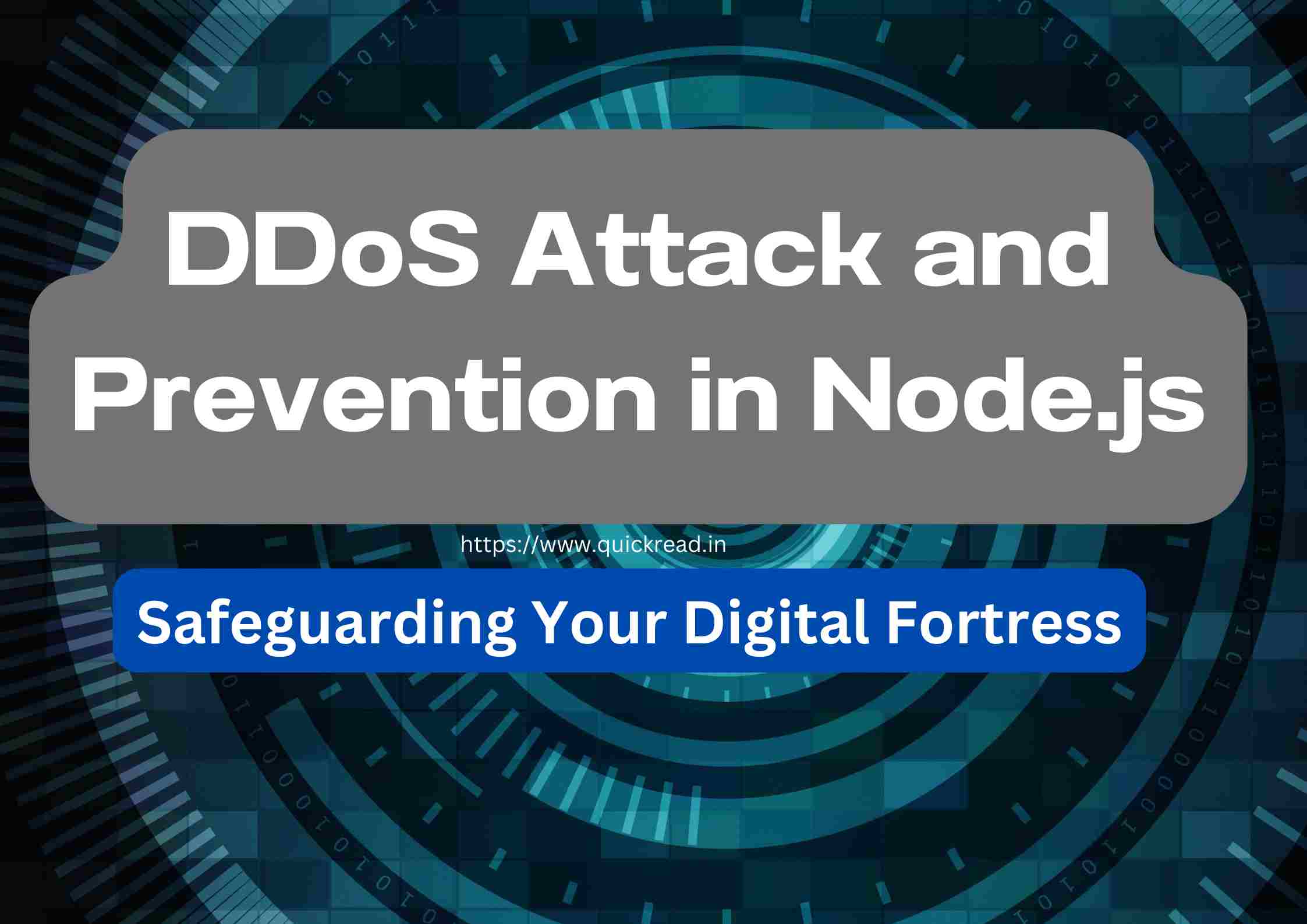Introduction
In the vast landscape of the digital world, where data flows ceaselessly and transactions occur at lightning speed, the security of online systems is paramount. One significant threat that website owners and developers must contend with is Distributed Denial of Service (DDoS) attacks. In this article, we will explore the intricacies of Distributed Denial of Service attacks and delve into effective prevention strategies, specifically tailored for applications built on NodeJS.
Understanding DDoS Attacks
What is a DDoS Attack?
Imagine you’re hosting a grand party, and your house is the venue. Now, what if someone sends a massive crowd to your front door, making it impossible for you and your invited guests to get inside? That’s essentially what a DDoS does to a website. It floods the server with a deluge of requests, causing it to become overwhelmed and unresponsive.
Types of Distributed Denial of Service Attacks
Its come in various flavors, much like different toppings on your favorite pizza. Some attacks focus on flooding the network with massive amounts of data (like a never-ending traffic jam), while others target specific vulnerabilities in the application layer (like sneaky spies trying to break into a fortress). Understanding these attack types is crucial for effective defense.
Impact of DDoS Attacks
The aftermath of a successful DDoS is akin to locking the doors of a bustling store during a sale. Legitimate customers are turned away, transactions halt, and the reputation of the business takes a hit. Financial losses, user dissatisfaction, and tarnished brand image are just a few of the consequences.
Vulnerabilities in Node.js
Node.js Overview
Node.js, often referred to as the conductor of the digital orchestra, powers countless web applications with its speedy performance and asynchronous capabilities. However, just like a superhero with a kryptonite weakness, Node has vulnerabilities that malicious actors can exploit to carry out D attacks.
Exploitable Node.js Vulnerabilities
Think of Node.js vulnerabilities as cracks in a fortress wall. Attackers search for these cracks and use them to breach the defenses. Common vulnerabilities include insufficient input validation (accepting anything that comes through the door), inadequate authentication mechanisms (letting in uninvited guests), and improper resource allocation (running out of supplies during a siege).
Detecting and Mitigating Distributed Denial of Service Attacks in Node.js
Traffic Analysis and Anomaly Detection
Imagine you’re a security guard watching over a party. You notice someone acting strangely, like wearing a disguise or sneaking in through a window. That’s what traffic analysis does for a website. It observes incoming requests and looks for anomalies, such as an unusually high number of requests from a single source.
Rate Limiting and Throttling
Think of rate limiting as a traffic cop controlling the flow of cars on a road. If cars start speeding or causing a jam, the cop steps in to keep things smooth. Similarly, rate limiting ensures that only a certain number of requests are allowed within a given time frame, preventing the server from becoming congested.
Web Application Firewalls (WAFs)
A Web Application Firewall is like a vigilant bouncer at a club entrance. It checks every visitor’s ID, ensuring they’re here for a good time and not to start trouble. If a visitor looks suspicious, the WAF blocks them from entering the party, safeguarding the website from potential threats.
Content Delivery Networks (CDNs)
CDNs are like friendly delivery drivers who bring your favorite toys right to your doorstep. When a website is under attack, CDNs help by distributing the load across multiple servers, ensuring that each server handles a manageable number of requests. This way, the website stays up and running smoothly.
Best Practices for DDoS Prevention
Regular Updates and Patching
Just like you update your favorite games to enjoy new features and fixes, Node.js and its dependencies need updates too. These updates include security patches that fortify the fortress against potential threats, keeping the website safe from DDoS bullies.
Load Balancing and Failover
Imagine juggling multiple balls to keep a show going. Load balancing is like that juggling act, distributing incoming requests across different servers. If one server gets too many requests, others step in to help, ensuring that the website remains accessible even during high traffic.
Cloud-Based DDoS Protection Services
Cloud-based Distributed Denial of Service attack protection services are like hiring an army of superheroes to guard your fortress. These services monitor incoming traffic in real time and use advanced techniques to filter out malicious requests, leaving only genuine visitors to enjoy the website.
Frequently Asked Questions
1. Can a Distributed Denial of Service attack really make a website unavailable?
Absolutely! Just like too many people crowding a doorway, a Distributed Denial of Service attack can overwhelm a website’s server, making it difficult for legitimate users to access.
2. How does Node.js make a website vulnerable to Distributed Denial of Service?
While Node.js is powerful, certain vulnerabilities can be exploited by attackers to flood the server with requests, leading to downtime.
3. Are DDoS attacks common?
Unfortunately, yes. DDoS are a common tactic used by cybercriminals to disrupt online services and extort businesses.
4. Can DDoS prevention measures affect website performance?
Yes, some prevention measures might introduce slight delays, but the trade-off is a secure and accessible website for genuine users.
5. Is it possible to recover from a Distributed Denial of Service Attack?
Certainly! With the right mitigation strategies and recovery plans in place, a website can bounce back from a Distributed Denial of Service and continue serving its users effectively.
Conclusion
In the ever-evolving digital landscape, Distributed Denial of Service attack pose a significant threat to online businesses and applications. By understanding the tactics employed by attackers and implementing robust prevention measures, organizations can fortify their Node.js applications against these cyber onslaughts. Through a combination of vigilant monitoring, intelligent mitigation strategies, and collaboration with security experts, websites can stand strong against the tides of Distributed Denial of Service attacks.


